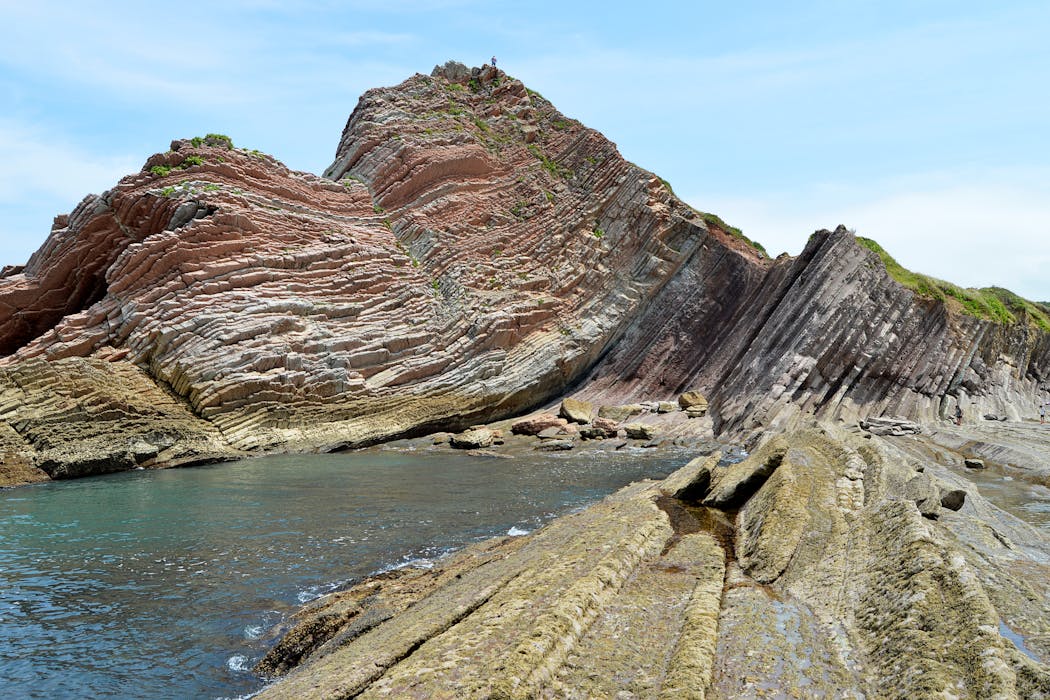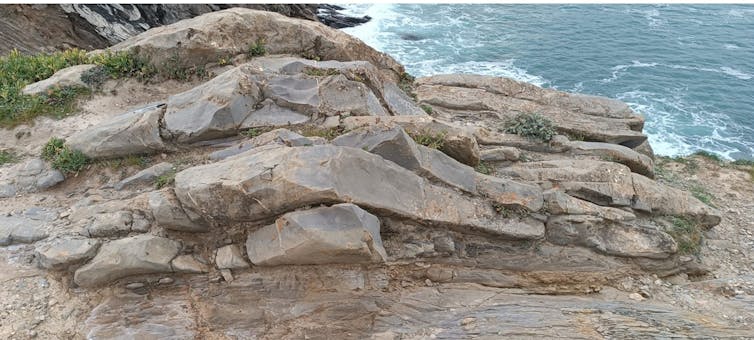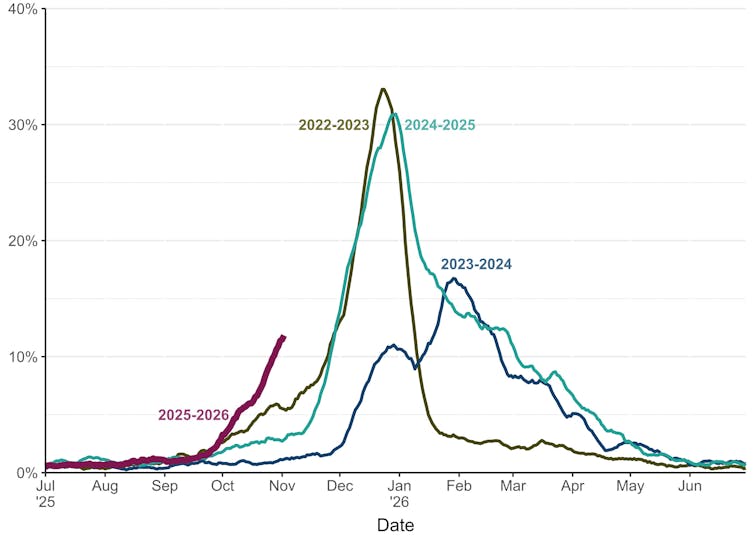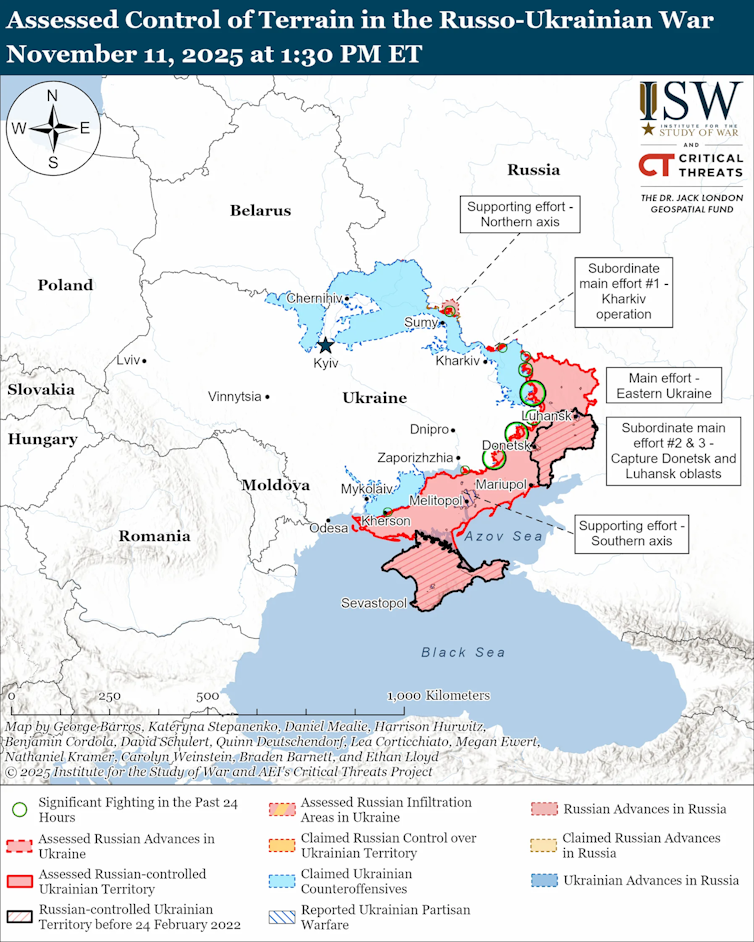Source: The Conversation – (in Spanish) – By Irene Repeto Deudero, Doctoranda en Biología, Universidad de Cádiz

En los últimos años, los incendios forestales se han vuelto más extensos, más frecuentes y más graves en muchas partes del mundo. Los veranos son más calurosos, las sequías más largas y los incendios que hace unas décadas eran excepcionales hoy resultan algo habitual.
Según el Sistema Europeo de Información sobre Incendios Forestales, en agosto de 2025 ardieron más de 540 000 hectáreas en la península ibérica, la cifra más alta desde que empezaron estos registros.
Paisajes ricos en combustible
Ante la pregunta de si el cambio climático está detrás de ellos, la respuesta no es nada sencilla. Sin duda, el cambio climático alarga las temporadas de riesgo y crea condiciones más propicias para que ocurra un incendio, pero no es la única causa. Los incendios forestales también dependen de las fuentes de ignición, del terreno y de la vegetación que los alimenta.
Para entender los incendios actuales también tenemos que mirar al paisaje que hemos construido.
Desde el siglo XIX se extendieron por toda Europa diversos programas de plantación a gran escala diseñados con el fin de producir madera, proteger el suelo o potenciar el desarrollo económico. En España, se plantaron más de 5 millones de hectáreas, la mayoría con especies de pino, un legado que ha marcado profundamente el paisaje actual.
Con el tiempo, el abandono rural ha aumentado la cantidad y la continuidad de la biomasa, creando paisajes ricos en combustible que ahora son muy vulnerables al fuego. Pero, ¿cómo influyen los diferentes tipos de combustible en la severidad de un incendio y en su recuperación? ¿Puede la gestión reducir el impacto del fuego en los paisajes dominados por plantaciones?
Leer más:
Incendios forestales: no todo es cambio climático
Lecciones aprendidas de los incendios en España
Nuestro equipo estudió tres grandes incendios en España (Sierra Bermeja, La Culebra y Las Hurdes, ocurridos entre 2021 y 2023) y encontramos que las plantaciones de pino ardieron con mayor severidad que robledales, bosques mixtos o matorrales. Además, estos tres últimos tipos de vegetación mostraban signos claros de recuperación después de un año, mientras que las plantaciones continuaron prácticamente desérticas.
Un año después del incendio, el paisaje de las áreas forestadas no se parecía al ecosistema original, pero tampoco a una plantación funcional. También observamos que las plantaciones pueden poner en riesgo a sus vecinos. En los tres incendios, la intensidad del fuego en la vegetación colindante fue mayor cuanto más cerca estuvieran de dichas plantaciones.
Sin embargo, no todas las plantaciones se quemaron por igual. Detectamos un umbral en torno a los 440 pinos por hectárea: por encima de esa densidad, la severidad del incendio se dispara. En cambio, en aquellas plantaciones en las que se había gestionado la densidad de árboles y el sotobosque, las consecuencias del incendio fueron mucho menos graves.
Estas observaciones suponen una buena noticia, porque significa que en estas plantaciones la gestión puede marcar la diferencia. Prácticas como los clareos, las podas o la tala selectiva bajan la carga y la continuidad del combustible, y fueron efectivas para reducir el impacto del fuego en esas zonas. Pasar de una plantación abandonada a una gestionada podría marcar la diferencia entre un incendio que se puede apagar u otro extremadamente difícil de manejar.
Fomentar un paisaje más diverso y menos inflamable
En el pasado, las plantaciones de pino tuvieron un papel clave en la economía europea y configuraron gran parte del paisaje que vemos hoy en día. Algunas repoblaciones ayudaron a frenar la pérdida de suelo tras décadas de sobreexplotación de los montes, y los salarios de la actividad forestal permitieron que muchas familias vivieran con dignidad en una economía de posguerra.
Sin embargo, en un contexto donde las condiciones climáticas son cada vez más duras, esas plantaciones están en riesgo de convertirse en puntos críticos para los grandes incendios.
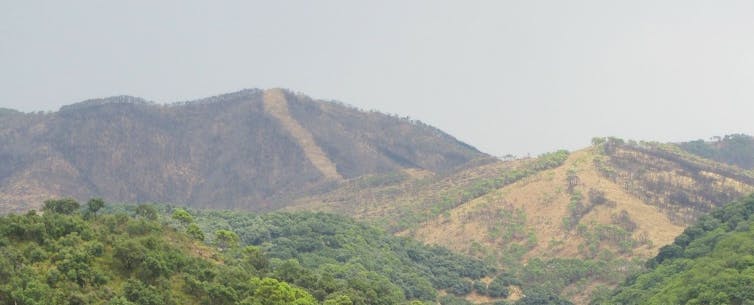
Juli G. Pausas
Los resultados de nuestra investigación demuestran que no toda la vegetación arde de la misma forma, sino que el tipo, la densidad y la conectividad del combustible determinan las consecuencias del fuego en el ecosistema y su capacidad para recuperarse. Este hallazgo es importante: implica que hacer inversiones fuertes en gestión forestal ya no es opcional.
Debemos dejar atrás el enfoque centrado en la extinción de incendios una vez han ocurrido y empezar a apostar por reducir la vulnerabilidad del territorio antes de que se origine el fuego.
Fomentar un paisaje más diverso y menos inflamable, además de mantener las plantaciones bajo manejo activo, es una estrategia realista y eficaz. Las medidas que implica no solo aportan beneficios a corto plazo, sino que también fortalecen los planes regionales de prevención y adaptación al fuego. Además, complementan, que no sustituyen, las estrategias globales enfocadas a mitigar el cambio climático.
Si bien su puesta en marcha supone grandes costes y retos logísticos, también ofrece oportunidades para impulsar una industria forestal más sostenible, paliar las consecuencias del abandono rural y promover paisajes donde las plantaciones formen parte de un equilibrio entre la productividad económica y la conservación de los ecosistemas.
En un mundo cada vez más cálido y propenso a los incendios, plantar árboles como estrategia de mitigación climática conlleva riesgos importantes. Sin embargo, a diferencia del clima o la topografía, el combustible sí está bajo nuestro control.
Repensar qué especies, dónde y cómo las plantamos, y sobre todo, qué ocurre con ellas después, es una condición esencial para construir paisajes más resilientes al fuego y, en definitiva, para aprender a convivir con él.
![]()
Irene Repeto Deudero recibió fondos de la Universidad de Cádiz.
– ref. Para comprender y gestionar mejor los incendios forestales debemos observar el paisaje – https://theconversation.com/para-comprender-y-gestionar-mejor-los-incendios-forestales-debemos-observar-el-paisaje-268444

